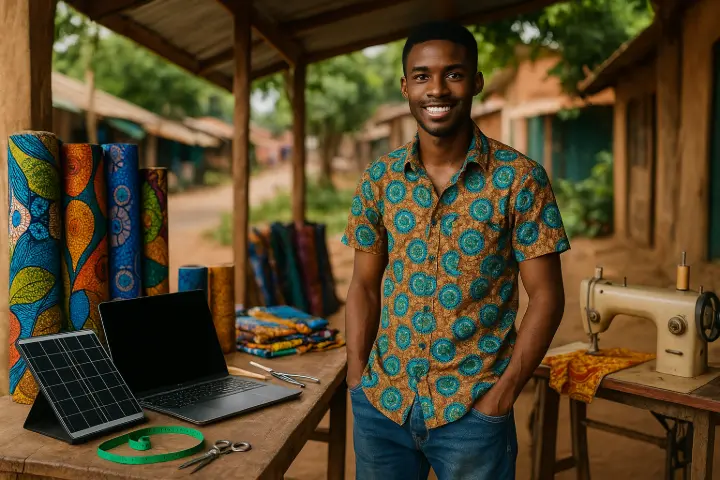In a small studio behind his family home in Kumasi, Ghana, Kwame Addo had a dream stitched in cotton. He wasn’t just a tailor, he was a fashion entrepreneur crafting Afro-fusion jackets from recycled fabric and local prints. His jackets carried Ghanaian heritage in every thread but struggled to travel beyond local markets.
Until China made an announcement that would shift everything.
“Tariff-free access to the Chinese market for all 53 African countries.”
A headline. A lifeline.
Navigating a New Trade Route
Kwame didn’t know much about geopolitics, but he knew about costs. Under previous trade conditions, exporting to China meant paying up to 30% in tariffs. His margins couldn’t survive that. But this new policy changed the rules: no tariffs, fewer trade barriers, and the world’s largest consumer base now within reach.

Kwame’s first question: What do Chinese youth care about in fashion?
His answer: sustainability, uniqueness, story.
So he repurposed his brand. Not just “Made in Africa”, but “Reborn in Africa”. Each jacket came with a QR code linking to a story; his story, Ghana’s textile heritage, and the local tailors he trained through Native Labs’ digital upskilling programme.
The Big Picture: Why This Matters for Africa
Kwame’s journey reflects a broader continental moment.
For decades, African entrepreneurs have been boxed in by supply chains that work against them; raw materials go out, finished products come in, and value is lost along the way.
But things are changing:
- China’s new zero-tariff deal breaks open doors long kept shut.
- AGOA, once a beacon of hope via the U.S., is wobbling under policy shifts and expiry risks.
- AfCFTA provides a regional backbone for Kwame to source materials from Nigeria and dye fabrics in Côte d’Ivoire before export.
Suddenly, Africa isn't just exporting goods. It's exporting stories, value, and culture on its own terms.
Looking Ahead: A Call to Africa’s Builders
Kwame is fictional, but his story is real in spirit. Right now, thousands of African entrepreneurs stand at a similar threshold.
The future isn’t about choosing between China or AGOA.
It’s about choosing Africa’s advantage.
With strategic storytelling, smarter trade alignments, and tech-powered creativity, the continent’s exporters, from shea butter artisans to 3D-printing innovators, can thrive in global markets without compromising identity.
Africa’s trade isn’t just moving products anymore. It’s moving on purpose.
Disclaimer: Kwame Addo is a fictional character created to illustrate the real opportunities emerging from Africa’s evolving trade partnerships. While his story is imagined, the trade policies, economic trends, and potential for African entrepreneurs are based on factual developments.